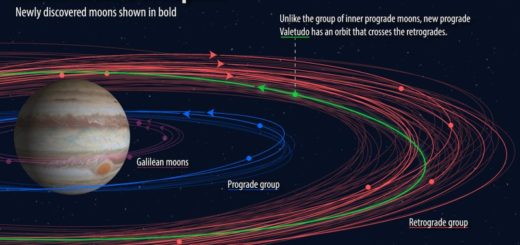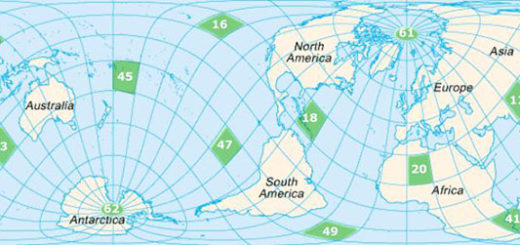Milky Way Is Home To More Than 100 Billion Brown Dwarfs
–
Our galaxy could have 100 billion brown dwarfs or more, according to recent study conducted by an international team of astronomers.
Astronomers focused their survey on distant star cluster, RCW 38 in the constellation of Vela. The cluster has a high density of large number of massive star, which die young in a supernova explosions.
As RCW 38 is located approximately 5,500 light-years away, the brown dwarfs are both faint, and hard to pick out next to the brighter stars. Thousands of brown dwarfs found so far are quite close to the Sun, the overwhelming majority within 1500 light years, simply because these objects are faint and therefore difficult to observe.
But the team – using the NACO adaptive optics camera on the European Southern Observatory’s Very Large Telescope – found the same ratio of brown dwarfs within the cluster, as in five other surveyed clusters going back to 2006, many without the same extreme conditions as RCW 38.
“We’ve found a lot of brown dwarfs in these clusters. And whatever the cluster type, the brown dwarfs are really common. Brown dwarfs form alongside stars in clusters, so our work suggests there are a huge number of brown dwarfs out there,”Aleks Scholz from the University of St Andrews, said in a press release.
It means that the environment where the stars form, whether stars are more or less massive, tightly packed or less crowded, has only a small effect on how brown dwarfs form.
See also:
A 46 Billion Pixel Image Of The Milky Way – Largest Ever Created
The Bullet: Mysterious Cloud Of Molecules Tearing Through The Milky Way
‘Zone Of Avoidance’ – Hidden Galaxies Behind The Milky Way – Discovered
More About Astronomy
Brown dwarf is a star with mass greater than about 0.01 solar mass but less than 0.08 solar mass; its core temperature does not rise high enough to start thermonuclear reactions. It is luminous, however, because it slowly shrinks in size and radiates away its gravitational energy. As its surface temperature is below the 2500 K lower limit for “red dwarfs”, it is known as a brown dwarf.
The first unambiguous detection (made in 1995) and image of a brown dwarf was that of Gliese 229B (GL229B), which was found in the constellation of Lepus. It is estimated to be 20 to 50 times the mass of Jupiter. More than 100 brown dwarf candidates have since been discovered in infrared surveys, many of which are warmer than GL229B but cooler than M dwarf stars. The Hubble Space Telescope (HST) has carried out a survey of brown dwarfs, showing that there are more low-mass brown dwarfs than high-mass ones.
Brown dwarfs are far more abundant than previously thought. The HST survey also showed that many brown dwarfs are ‘free-floating’ isolated bodies rather than members of close binary



 Creators of mankind
Creators of mankind Description of “Tall white aliens”
Description of “Tall white aliens” Where they came from?
Where they came from? About hostile civilizations
About hostile civilizations The war for the Earth
The war for the Earth “Tall white aliens” about eternal life
“Tall white aliens” about eternal life Video: “Nordic aliens”
Video: “Nordic aliens” Aliens
Aliens Alien encounters
Alien encounters The aliens base
The aliens base UFO
UFO Technology UFO
Technology UFO Underground civilization
Underground civilization Ancient alien artifacts
Ancient alien artifacts Military and UFO
Military and UFO Mysteries and hypotheses
Mysteries and hypotheses Scientific facts
Scientific facts


















